As parents of two little ones both under two and a half, my wife and I don’t make it to the theaters very often. So, when last Saturday we were able to make it to see the 10 a.m. showing of Oppenheimer we were both extremely excited to be out of the house. The dramatic movie was well played and naturally a bit thought provoking. As a hands-on kind of thinker, my first thought was, “I wonder if we live in a high-priority target area?” and my second thought was “If we don’t live in a target area or next to a nuclear power plant, how far away are we from one and are we downwind?” I allowed these curiosities to send me down the rabbit hole on a bit of an engineer’s journey. The following were some of the findings that came out of it.
For clarification, this article is not about my feelings on an impending nuclear war, I have no plans to buy or create a nuclear shelter and I don’t plan on making any major life changes under the current circumstances. This article is about assessing location risk based on weather patterns and some of the little things that can be done to hedge. So, how do you assess the risk if you are confident that you are not in an identified high priority target city or next to a nuclear power plant, but the nearest city is closer than 100-miles away?
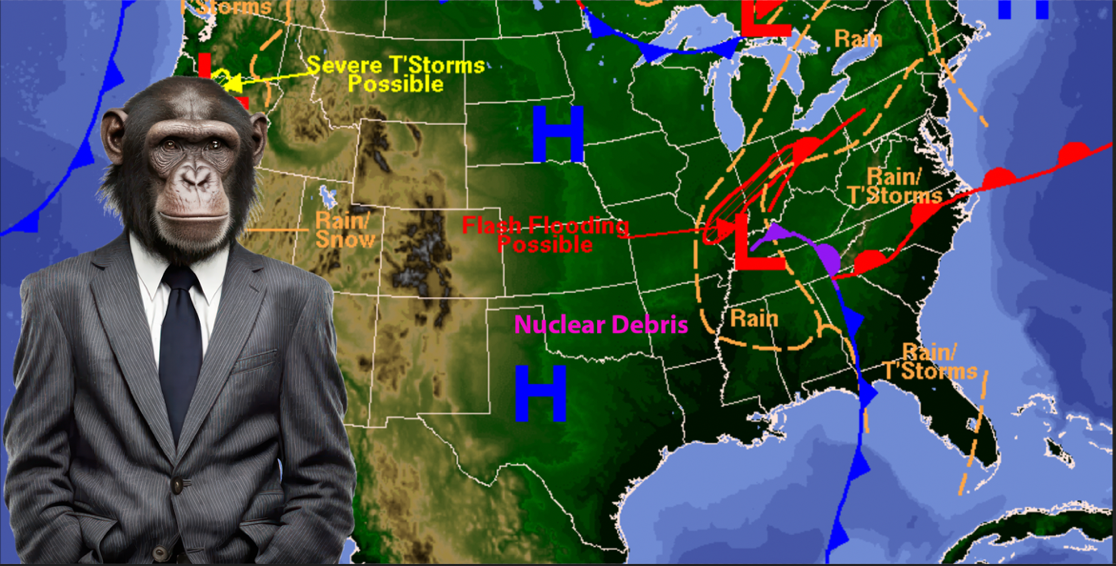
What are the standard high-value targets?
Finding the nearest nuclear power plant is a straightforward activity so my starting point was trying to locate high value nuclear attack targets. So, “What are the highest priority targets in the U.S. for outside nuclear attacks?” was typed into ChatGPT. As soon as I pressed the “enter” button, I realized that I had simultaneously added my name to a watch list (again) and somehow upset the A.I. model. What followed was the most indignant response I have received to date from a search prompt stating the equivalent of, “How dare you, I am not that type of girl.” Which comically had me trying to explain myself to an A.I. prompt reader that I was just in the middle of a thought experiment. Once past that hiccup, the answers were determined to be the usual suspect criteria for cities, such as: financial hubs, high population hubs, shipping logistics hubs, military logistics hubs, resource hubs or nuclear energy plants. Unfortunately, most of the cities I have spent my life in check one of these boxes, but for the sake of this article, let’s assume you do not live in one of these cities and that you will not be worried about how to get out of a city if the worst happens.
How far away could a nuclear event directly affect my health?
I used to assume that living outside of the blast zone for a meltdown or an event was living outside of the trouble. However, when I read an article earlier this year warning different European cities about needing to stock up on potassium iodide (thyroid protection from nuclear particle exposure) based on the possible destruction of a nuclear power plant over 100 miles away; the reality of the role of the weather variable all clicked together. I am trained as an aerospace engineer and if you were to ask my parents why I chose such a field they would probably tell you that it was the closest I could get to an engineering degree in sailboat racing. I mention this because this little hobby of mine comes with a mandatory amateur meteorology background. This weather background, combined with some trivia on the air velocity of jet-streams, brought me back to the reality that after a significant event radioactive particles could travel over 500 miles away from the event origin, but will likely only accumulate in much closer distances.
What is the travel time of a particle?
Since this little thought experiment had just become a sailing adventure of sorts, the first variable that needed to be sorted was how long a particle could stay air born and “sailing” on different air currents. The consensus on the average radioactive materials used as fissile material for both weapons and energy generation is, uranium-235 or plutonium-239. These materials, in an event, could generate particles of the sizes that would likely fall out of the air on the following schedule:
- Within two-hours 50% of the highest density particles would fall out of the air
- Within 24-hours an additional 30% of the particles (80% total) would fall out
- Within three-days an additional 10% of the particles (90% total) would fall out, and
- Within seven-days the fallout would have grown to what was called “the vast majority” of the particles
How far could your average particle travel?
If you exclude regional weather frontal systems, the average thermal based windspeed in an average US city is between 2 to 10 miles per hour, with an average of a 10% increase in speed for every 1,000’ of elevation. If we assume that the majority of the particles start at an average height of 1,500’ and travel at a maximum average speed of 10.5 miles per hour, you would have the following maximum possible distance traveled by particles:
- 50% of all particles would be within 21-miles downwind of the event
- 80% of all particles would be within 252-miles downwind of the event
- 90% of all particles would be within 756-miles downwind of the event
Could a single thermal based breeze really carry particles this far?
I am not a meteorologist, but the simple model described above is probably highly unlikely as thermal based breezes are normally coming towards a heat source headed away from a lack of heat, which are all governed by 24-hour sun-cycles. This means that most of these systems “turn on” and then warm up in one direction, then slow down, “turn off” and ramp up in the opposite direction all within a single 24-hour period. As a result, it would require some extremely unusual thermal activity to get far beyond 30 to 50-miles of linear travel with some very large heat and cold sources (think oceans and deserts). Since most of these thermal based breezes occur around more local heat syncs, they bring about very chaotic wind directions when examined over longer distances (as seen below), which are not conducive to long durations of linear travel. Weather systems and the jet-stream, on the other hand, tend to have far more energy and can distribute particles from much further away in high concentration to other areas.
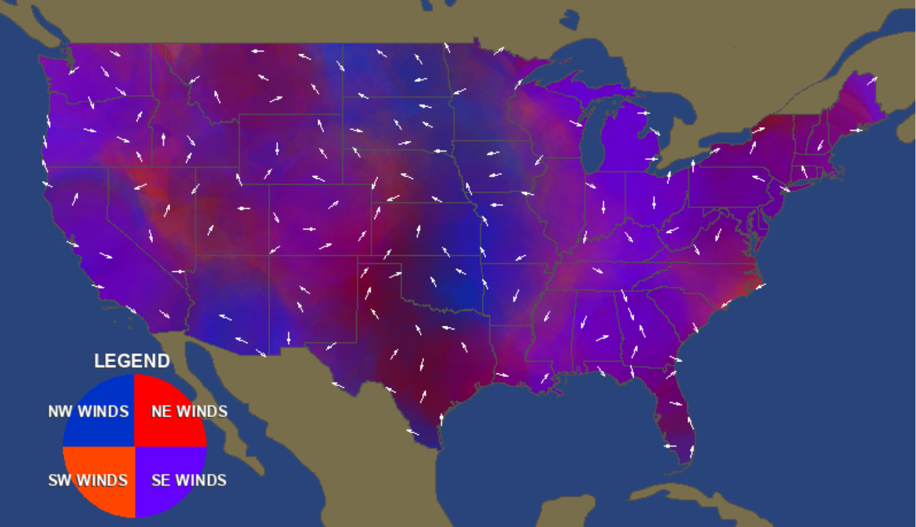
Early Morning US Wind Vectors Image with Minimal Frontal activity
How far could a particle travel in frontal systems or the jet-stream?
When I met other students in school that told me that they are involved in atmospheric modeling, I generally told them “God bless you and your love for very advanced math,” as I knew I had no appetite for the math that they had to regularly embark on. It is for this reason that we will be dropping any form of calculation going forward and looking at past examples of wildfire smoke paths as a simulation for possible long distance nuclear particle travel. The good news is that smoke particles can stay air born for two to three times longer than the nuclear particles we discussed earlier, but the bad news that you can see below, is that smoke paths show us just how far weather systems and the jet-stream can carry fine particles.
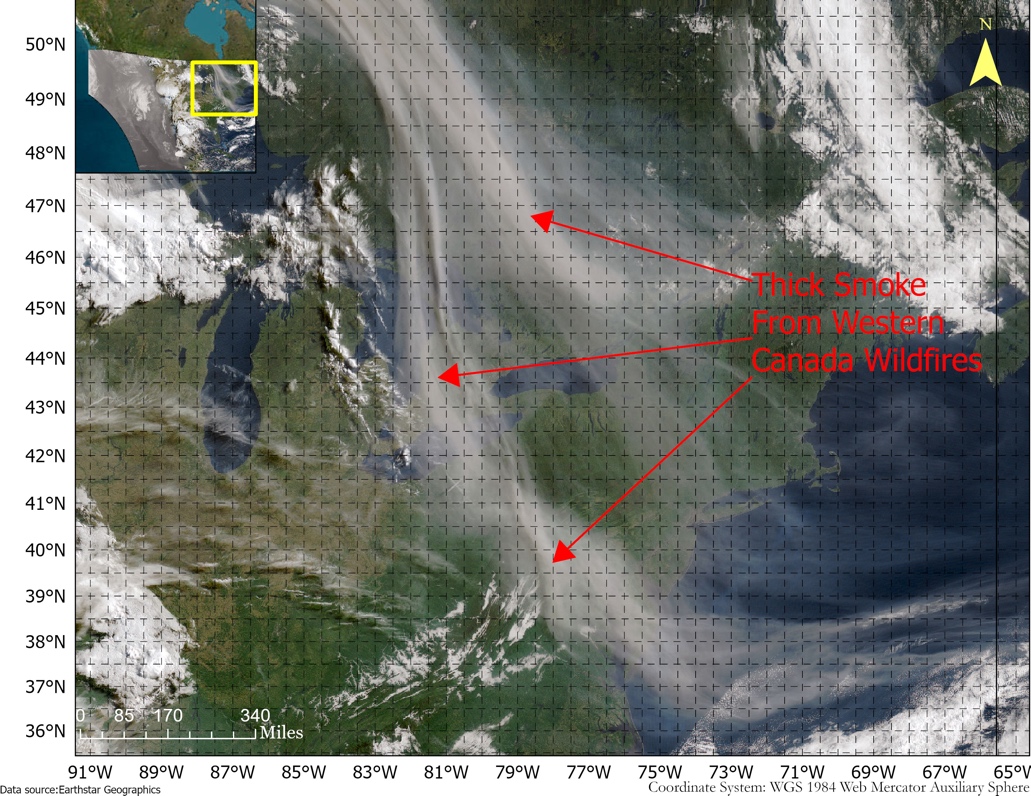
Western Canadian wildfires had clear smoke paths traveling over 3,000 miles in 2023
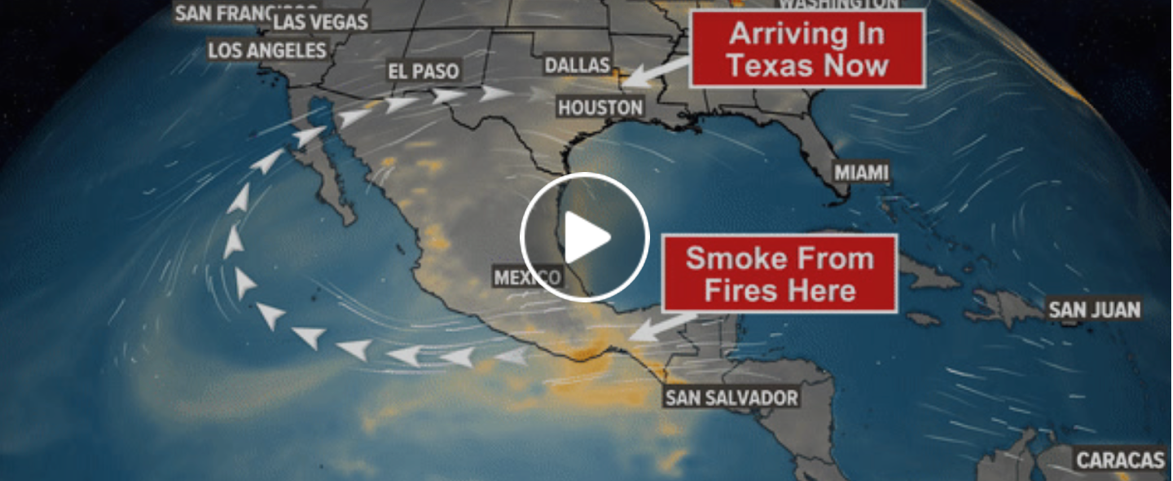
2015 Southern Mexico Wildfires significantly impacted air quality in Houston 1,000 miles away
Is there a “Hedge my bets” answer on weather versus location?
As you can see from the two wildfire examples, there are very few places in the US that are out of reach in terms of distance when it comes to particle travels in frontal systems or the jet-stream, but there are a couple things that should be kept in mind.
- To start with, most weather in the latitudes of the lower 48 states predominantly travels West to East and most cities know the general direction that most of their weather will be coming from when looking at a weather map. If you are not familiar with these general travel patterns of weather in your area it would be worth taking a total of 3 minutes to get more familiar with them and determining how far you are from possible target cities and under what weather patterns that would be an issue. Weather applications like “Windy” are great places to get a feel for how the wind moves closer to the ground. Active wind vector maps are surprisingly captivating.
- The jet-stream can change these patterns for some states very quickly and high northern or southern states can sometimes see more variation in their patterns (sorry Florida).
- It’s also worth noting that the US is known for very extreme weather and to never under-estimate it. Many weather factors come together in the US to produce 5-times more tornadoes than all of Europe, so it is also worth keeping in mind that rules of thumb can easily be challenged under the right conditions.
All of this said, if I was 10 to 50 miles “downwind” of a nuclear facility or possible target I would probably have a more robust plan thought out than if I was 50 to 80 miles “upwind” of one of these locations. In other words, I would much rather be Lawrence Kansas in relation to Kansas City, than Oakland in relation to San Francisco.
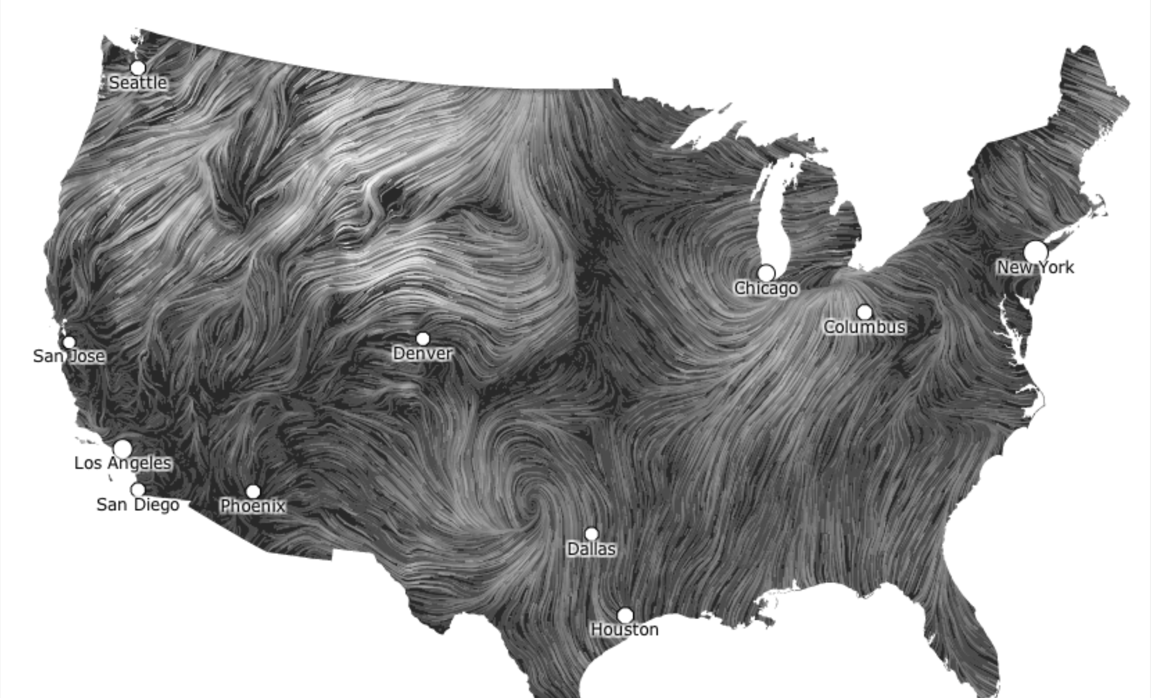
Still Frame of a Live United States Wind Vector Map
What can be done about these particles?
Now that you understand more about the variables of the weather delivery system, you’ll be happy to know that many of the health risks can successfully be mitigated. The primary mechanism by which these particles wreak long-term havoc on the human body are typically from ingestion or inhalation. This means that if you can stay inside in a well-sealed space for the 24-hours, 3-days or a week after an event and avoid directly contaminated food (stay away from your garden), you will be a in better shape than others. The first order of business in this scenario is an honest assessment of how well your space is sealed. The second is probably buying some basic materials that can be found at a hardware store to temporarily seal the space more securely. If you feel that things have changed enough to buy a little tape and plastic, you probably need to consider food, water and the basics of what you need to make it through your standard Montana blizzard. If you are feeling like it is likely that you may need to go outside during this period, the recommendations seem to be long sleeves, high-quality masks and plastic bags to dispose of your clothes once back inside. There are countless great articles that can take it from here on how to prepare for these scenarios, so we can conclude this brief preparation thought into the worst of the worst.
But What to do?
As far as this article is concerned, if we are not talking about nuclear power plant mismanagement, life after that first week is not something I want to spend much time on right now, as it contains many realities that cannot easily be prepared for. As mentioned in the beginning, this article was merely an engineer’s musings on assessing the weather-based risks for the abstract thought of a possible event. The only thought process I hoped to encourage was to assess your own weather-based risks in terms of your location so you have a little more knowledge on how you should be actioning possible future headlines. I am not advocating worry, as it has been said that worriers die twice, once with all the worrying and then again at the end of the journey. However, if you happen to live in a common downwind path of a major strategic target or an active nuclear power plant, it would not be very wise to count on the U.S. government for help at the point in time that you would need it. A little reading, a couple purchases and then forgetting the topic is probably best for one’s mental health.
Money?
Again, if we are not talking about an isolated meltdown of a nuclear energy plant, every source I found for strategic targets had financial centers listed as the primary targets. So, it should probably be assumed that people who can barter with physical goods will likely be in better shape than those who don’t, but again, this is not an article to encourage everyone to plan for the extreme. These days I am just upgrading the quality of my particle masks for construction projects and enjoying dips in the spot price of silver.

